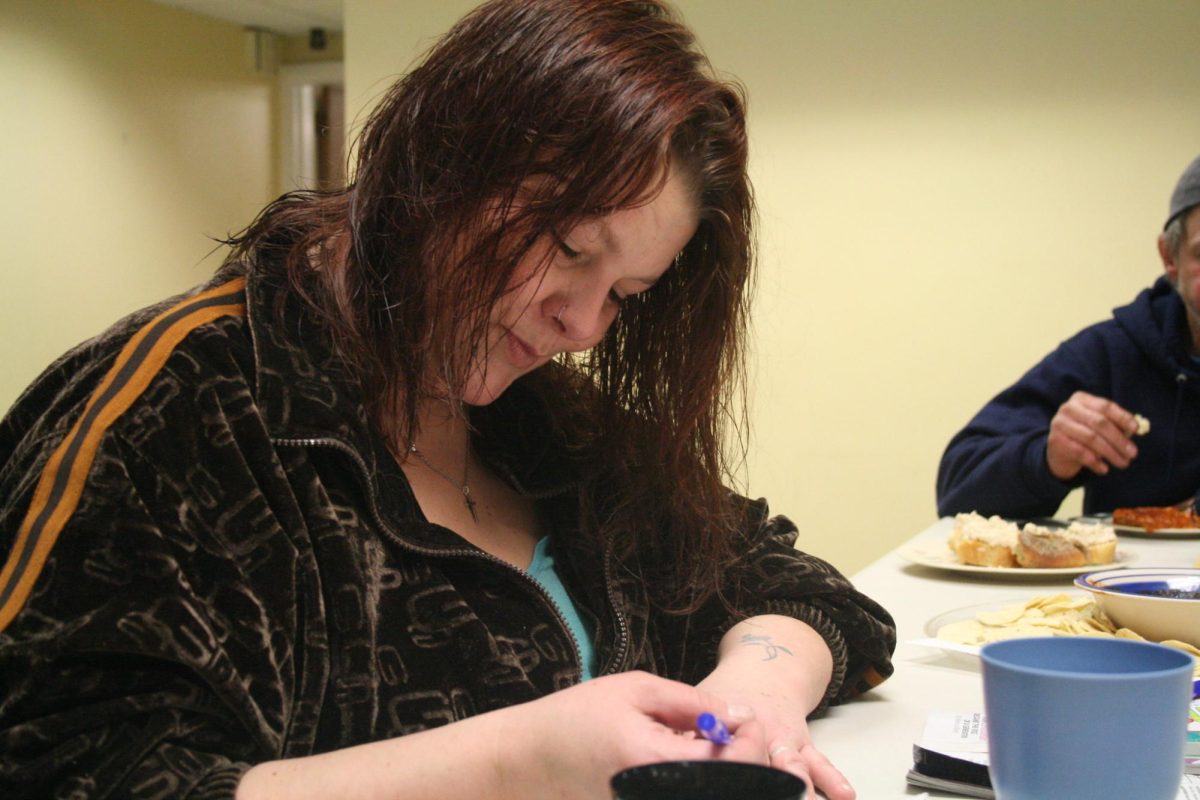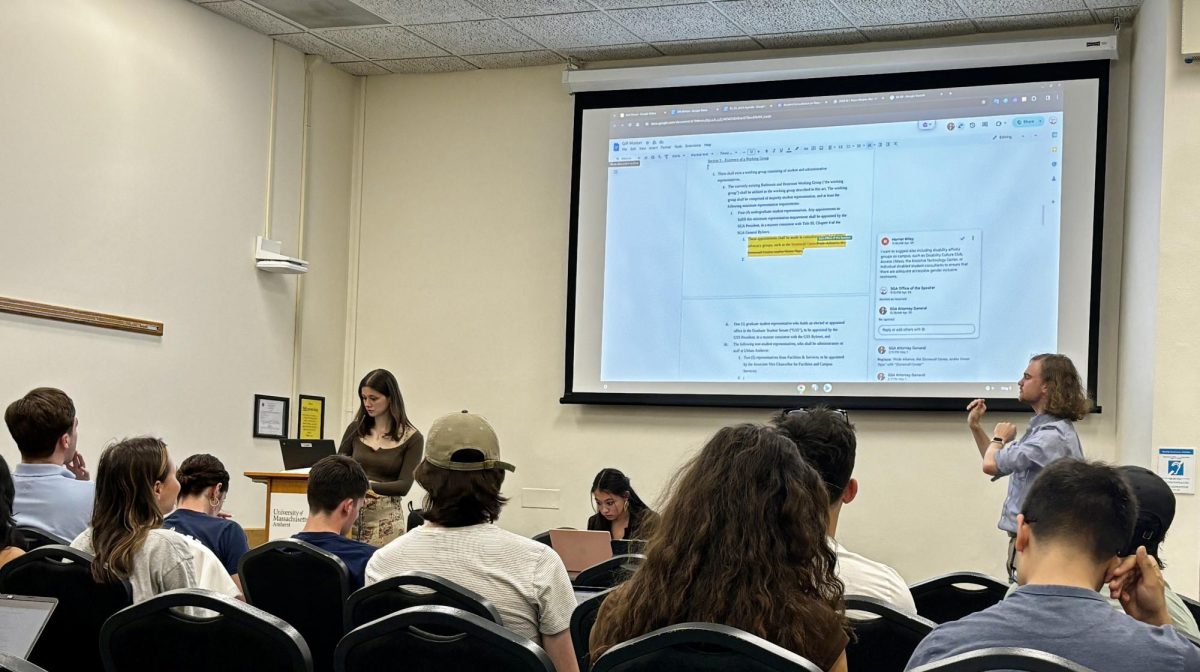 Kate Olesin
Kate Olesin

Today, a chocolate bar costs you fifty cents from a vending machine – but residents of colonial Deerfield had a much more labor intensive process to be able to munch on that sweet reward.
The fifth annual chocolate celebration this past Saturday in historic Deerfield relived the colonists’ experience producing the sweet dessert for over 200 years.
This year’s festival marks the first time Mars, Inc., developers of American Heritage Chocolate, has sponsored the event. American Heritage Chocolate uses traditional colonial recipes to recreate the kind of chocolate Deerfield residents in the eighteenth century would have consumed. It is sold in only seven historical sites, including Historic Deerfield.
On Feb. 9, from 10 a.m. to 4 p.m. visitors to Historic Deerfield’s American Heritage Chocolate Celebration were greeted with plenty of opportunities to celebrate their love of chocolate. Admission to the festival was $14 for adults, $5 for youth (6-21) and kids under six were free.
Admission included events ranging from demonstrations on how colonists roasted and grinded their cacao (pronounced “cah-cow”) nibs into chocolate, to lectures on the history of chocolate in Latin America.
And of course, there were samples.
American Heritage Chocolate provided chocolate sticks and hot spiced chocolate drinks for guests to try.
Amanda Lange’s speech, “The Natural History of Cacao: Botany and Processing,” introduced the audience to the world of chocolate production and six different single origin chocolate samples. Lange, curator of historic interiors in Historic Deerfield, dissected the process of turning the cacao fruit into its solid chocolate form before the sampling could begin.
Lange’s audience learned that the cacao tree originated in either the Amazon or the foothills of the Andes mountains in Venezuela. There are 20 different species of cacao trees, but only three are used for consumption. The trees can live for 100 years but are only economically productive for about 60 of those years.
The cacao tree thrives in rainforests and in other densely shaded regions. Midges, which are tiny, fly-like insects, exclusively pollinate the cacao flower. Only three out of every 1000 flowers grow into a fruit, and it takes five to eight months for the flower to blossom. Once ripe, the fruit needs to be cut from the tree, usually by machete. The inside of a cacao fruit consists of 50-60 seeds surrounded by a sugary, slimy substance called “baba,” the Spanish word for slime.
The seeds are fermented for two to 10 days and then sun-dried for a week. The seeds need to be raked several times a day while they are being dried. After drying, the seeds still need to be shelled and ground into chocolate.
After the presentation, six different single origin chocolates were sampled by the audience gathered in the recreated church. The chocolate pieces ranged from 60 percent to 84 percent cacao, the other ingredients typically being lecithin (an emulsifier), cocoa butter and vanilla.
Professional chocolate tasting, or “terroir,” French for sense of place, involves testing the chocolate “like a good wine or a good scotch,” according to Lange.
The chocolate was provided by Cooks Shop Here, a gourmet food store in Northampton. The brands of chocolate came from all over the world, including Paris, the Dominican Republic, Ecuador and Seattle.
The official tasting by the audience started with the lowest cacao percentage and then slowly increased with each new sample. The lower end of the cacao spectrum tasted like a good, specialty dark chocolate. The higher the cacao content, the more earthy, bitter and exotic it tasted.
In the Hall Tavern, visitors watched Susan McLellan Plaisted’s traditional colonial presentation on open-hearth cacao roasting. Plaisted, director of Foodways at Pennsbury Manor, roasted the cacao nibs over an open hearth before grinding them on a metate, a stone slab used in colonial cooking – a process that takes two hours to complete.
In Ancient Aztec culture, where chocolate was first cultivated, Plaisted explained to her audience, chocolate was not only a drink, but also a form of currency. The Aztecs liked chocolate so much, they ended up drinking their money.
In colonial Deerfield, chocolate was an expensive delicacy purchased from importers in Boston. It was so revered in fact, that colonists crafted silver pots exclusively used for chocolate. At Saturday’s celebration, silversmith Steve Smithers demonstrated how to make a silver chocolate pot.
Next door to the Silver Shop was the History Workshop, where guests could make an assortment of crafts. At one table there was decorative paper, stickers and ribbons provided for creating Valentine’s Day cards. On another, guests combined cocoa, dark brown sugar, and vanilla powder along with a variety of spices like nutmeg, cinnamon, cloves and chili powder to take home and make traditional colonial hot chocolate.
In addition to the chocolate festivities, guests could also take a horse drawn wagon ride around town or tour the historic houses and museums. The Ashley House, Williams House, Silver Shop, Frary House and Wells-Thorn House were open for guided house tours. Visitors could also explore the Flynt Center for New England Life, the Sheldon House and the Stebbins House independently.
At the Terrace Caf’eacute; in the Deerfield Inn, visitors could purchase an assortment of chocolate entrees, drinks and desserts. Some items included chocolate chili, chocolate cheesecake, truffles, and chocolate martinis.
The chocolate dipped, dried fruit skewers were just as tasty as they were presented. The chocolate was slightly dark and paired nicely with the pineapple.
On the other hand, the chocolate dipped cheesecake provided a primarily vanilla taste – but had a melt-in-your-mouth chocolate flavor that fit well with the chocolate theme.
In Latin, cacao means, “food of the gods,” a fact that should come as no surprise to those who celebrated its importance at the fifth annual Historic Deerfield American Heritage Chocolate Celebration.
Melissa Garber can be reached at [email protected].
Kate Olesin can be reached at [email protected].






